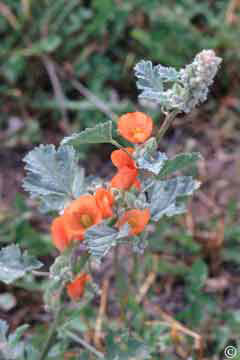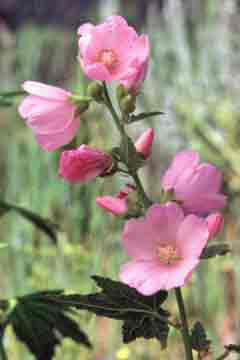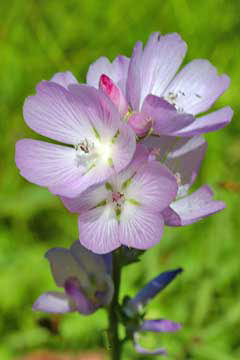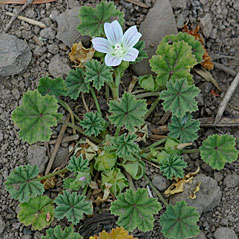
Streambank globe mallow, Iliamna rivularis (Douglas ex Hook.) Greene (right). This mallow is sometimes referred to as a wild hollyhock (although true hollyhocks are in genus Alcea). The name Iliamna apparently came from an Athabaskan word, used for Lake Iliamna in Alaska; rivularis, means “of brooklets.” The latter is an apt term, for this lovely montane plant blooms in mid-summer along streams, and in dry creek beds. Its showy pink flowers, the flowers’ staminate tubes, and alternating maple-like leaves identify the plant.




Cheeseweed, Malva parviflora L. The common cheeseweed, shown on the left, and the closely related and very similat dwarf mallow, Malva neglecta Wallr. (not shown) are common Eurasian weeds found throughout the United States and Canada, growing to fairly high elevations in our mountains. They are easily identified by their round leaves and white flowers with pale purple markings. Their fruit resembles small round cheeses whence the common name "cheeseweed." Both the fruit and leaves are edible, and are used for food in other countries.
Common mallow, Malva sylvestris L. (right). True mallows—species of Malva—are Eurasian plants. Several species arrived in the New World centuries ago and are now at home in North America. The common mallow would certainly place high on anyone’s list of showy weeds; it resembles a small hollyhock with attractive, purple-streaked, five-petaled flowers. More common in the Pacific coastal states, it is now sometimes found at higher elevations in Idaho. While Americans do not recognize it as a food plant, its leaves have long been used as greens, both raw and cooked.
